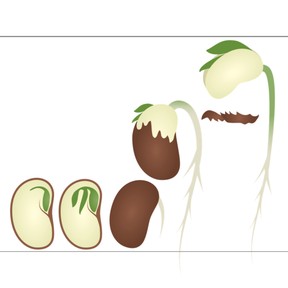
How plant structures help them survive and reproduce
I can explain how plants have structures that support their survival.



8,000 schools use Gynzy
92,000 teachers use Gynzy
1,600,000 students use Gynzy
General
In this lesson, your students will review what they know about cells. They will learn about how a plant begins as a seed and germinates into a plant. The class will discuss the parts of a plant and how each structure supports survival and growth. They will finish the lesson with a fun spin-the-wheel activity, explaining how each structure supports survival, growth, and/or reproduction.
Standards
4-LS1-1
Learning Objective
Students will be able to explain and describe how plants have structures that function to support survival, growth, and reproduction.
Introduction
Introduce this lesson with a discussion of the students’ own experiences planting seeds. The class takes part in a matching activity as they try to guess which seed grows a specific plant.
Instruction
The lesson continues as the students recall together by answering “How many parts of a plant can you remember?” The plant’s parts will then be revealed. Explain that all organisms have structures and functions that help them survive, grow, reproduce and behave in a certain way. Introduce the concept of seed germination. Read about and view images showing each stage. Students will then show their understanding by using their own words to describe what happens in each stage of germination. Continue with a discussion of how roots, stems, leaves, and flowers each support the survival and growth of a plant.
Quiz
Students respond to ten multiple-choice and true/false questions.
Closing
Close the lesson with a Spin The Wheel Activity where the students take turns explaining how each structure supports the survival, growth, and/or reproduction of the plant.
The online teaching platform for interactive whiteboards and displays in schools
Save time building lessons
Manage the classroom more efficiently
Increase student engagement
Discover more!
About Gynzy
Gynzy is an online teaching platform for interactive whiteboards and displays in schools.
With a focus on elementary education, Gynzy’s Whiteboard, digital tools, and activities make it easy for teachers to save time building lessons, increase student engagement, and make classroom management more efficient.



